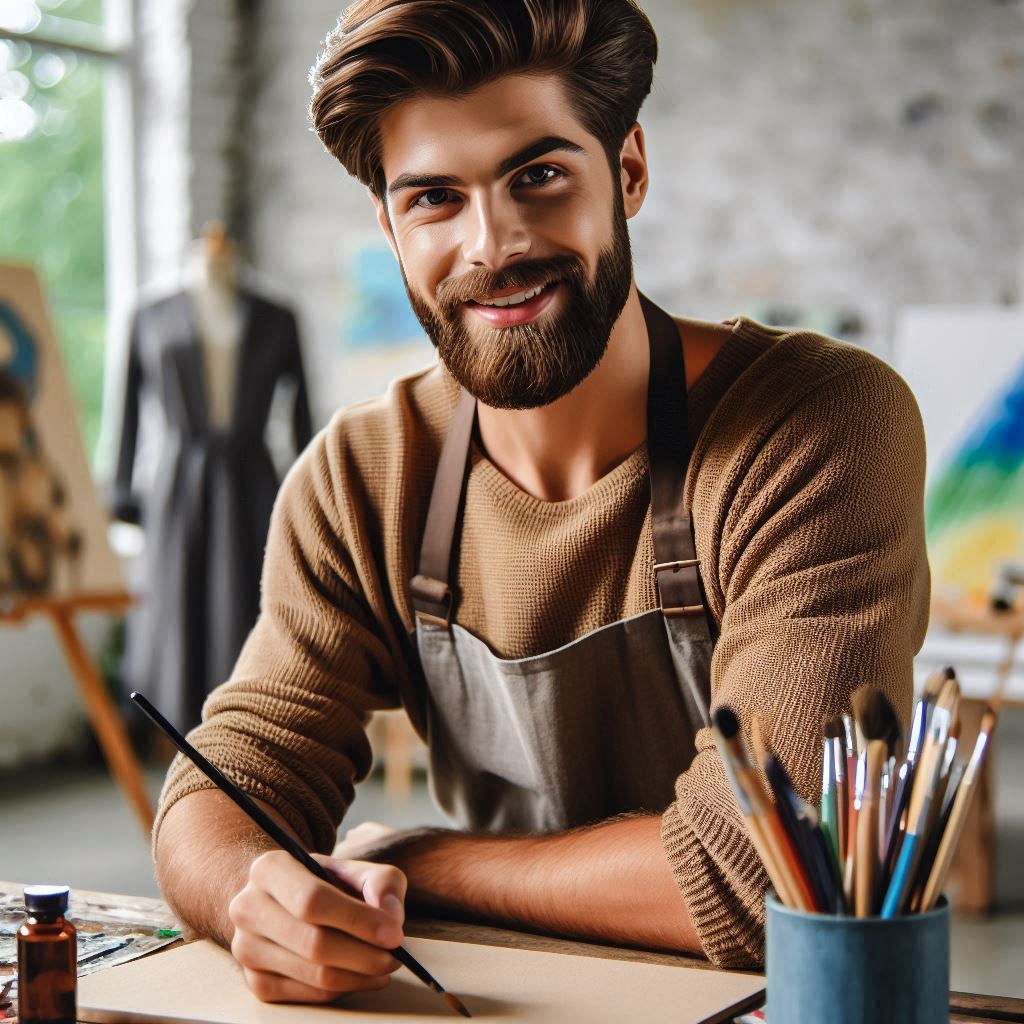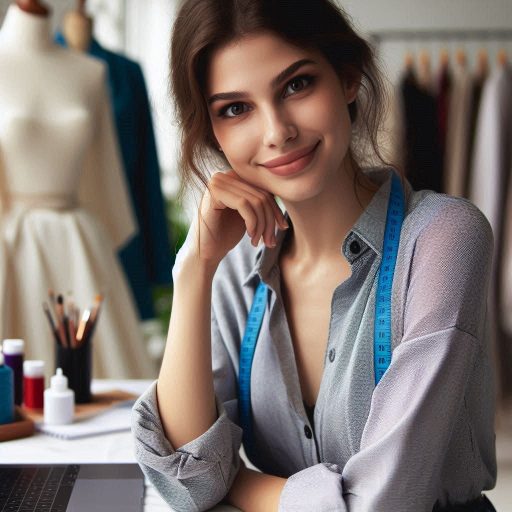Introduction
Effective teaching methods are crucial for art educators.
They shape how students experience and engage with art.
Art education requires more than just imparting techniques.
It involves fostering creativity, critical thinking, and a deep appreciation for art.
Effective methods help achieve these goals.
Understanding the importance of these methods begins with recognizing their impact on student learning.
When art educators employ effective strategies, they create an environment where students feel inspired and motivated.
These methods make learning more interactive and enjoyable.
Students are more likely to participate actively and experiment with their creativity.
Effective teaching methods also enhance engagement.
Art classes that use diverse approaches capture students’ interest and maintain their focus.
Techniques like hands-on activities, interactive discussions, and multimedia resources help make lessons more dynamic.
This variety keeps students excited about learning and exploring new concepts.
Additionally, these methods promote better retention of skills and knowledge.
When students are engaged and interested, they are more likely to remember what they have learned.
Effective methods often include practical applications, allowing students to practice and refine their skills.
This experiential learning deepens their understanding and mastery of art.
Moreover, fostering a positive learning environment is essential.
Art educators who use effective methods create a space where students feel safe to express themselves.
This positive environment encourages risk-taking and creativity, crucial components of artistic growth.
Transform Your Career Today
Unlock a personalized career strategy that drives real results. Get tailored advice and a roadmap designed just for you.
Start NowIn summary, effective teaching methods are vital for art educators.
They enhance student learning and engagement, making art education a more enriching experience.
By adopting diverse and interactive approaches, art educators can inspire their students and nurture their artistic development.
Understanding the needs of diverse learners
When it comes to effective teaching methods for art educators, one crucial aspect to consider is understanding the needs of diverse learners.
This involves recognizing different learning styles and abilities and adapting teaching methods to cater to individual student needs.
Recognizing different learning styles and abilities
Students come from a variety of backgrounds and have unique ways of processing information.
Some may be visual learners, while others are auditory or kinesthetic learners.
Recognizing these differences is essential for creating a supportive and inclusive learning environment.
Adapting teaching methods to cater to individual student needs
Once art educators have identified the various learning styles and abilities present in their classroom, it is important to adapt teaching methods accordingly.
This could involve incorporating a mix of visual, auditory, and hands-on activities to accommodate different preferences.
- Utilize visual aids such as diagrams, charts, and pictures to help visual learners grasp concepts more easily.
- Incorporate group discussions and verbal explanations for auditory learners to engage with the material effectively.
- Include hands-on projects and interactive activities for kinesthetic learners to apply their learning in a practical way.
- Provide options for students to choose how they demonstrate their understanding, whether through written assignments, visual art projects, or oral presentations.
By understanding the needs of diverse learners and adapting teaching methods to cater to individual student needs, art educators can create a more engaging and inclusive learning environment.
This personalized approach allows students to thrive and develop their skills to the fullest, ensuring that every student has the opportunity to succeed in the art classroom.
Read: Costume Design: Collaborating with Directors
Incorporating technology in art education
Utilizing digital tools for creative expression and collaboration
Incorporating technology in art education can significantly enhance the learning experience for students.
By utilizing digital tools for creative expression and collaboration, educators can engage students in new and exciting ways.
One effective method is to introduce students to graphic design software such as Adobe Photoshop or Illustrator.
This allows them to experiment with different techniques and styles, fostering creativity and innovation in their artwork.
Another way to incorporate technology is by teaching students how to use digital cameras and editing software.
By capturing images and editing them digitally, students can explore new forms of visual storytelling and manipulate their photographs to create unique pieces of art.
Integrating multimedia resources to enhance visual learning experiences
Integrating multimedia resources is also a great way to enhance visual learning experiences in art education.
Transform Your Career Today
Unlock a personalized career strategy that drives real results. Get tailored advice and a roadmap designed just for you.
Start NowEducators can use online platforms like ArtSteps or Canva to create interactive presentations and galleries, providing students with a more immersive learning experience.
Additionally, virtual reality (VR) and augmented reality (AR) can be used to transport students to different art galleries or historical sites, allowing them to explore artworks and history in a more engaging and interactive way.
By incorporating technology in art education, educators can create a dynamic and innovative learning environment that fosters creativity, collaboration, and critical thinking skills in students.
Embracing new digital tools and resources can help students develop a deeper appreciation for art and empower them to express themselves in new and exciting ways.
Read: How to Build a Portfolio for Art Teaching
Encouraging Creative Thinking and Problem-Solving Skills
Implementing Open-Ended Projects That Promote Critical Thinking
Open-ended projects spark creativity by allowing students to explore their own ideas.
These projects do not have a single correct answer, encouraging students to think critically.
For instance, instead of assigning a specific drawing, ask students to create an artwork representing their emotions.
This approach fosters individual expression and problem-solving.
It challenges students to interpret concepts in their unique ways, promoting deeper understanding.
By engaging with open-ended projects, students learn to evaluate their choices and outcomes, enhancing their critical thinking skills.
Provide students with various materials and media to encourage diverse approaches and solutions.
Providing Opportunities for Students to Experiment and Explore New Ideas
Allowing students to experiment with different techniques and materials helps cultivate their creativity.
Provide a range of art supplies and encourage students to use them in innovative ways.
Create a classroom environment that supports trial and error.
For example, let students try out various painting methods or sculpting techniques without the pressure of achieving perfect results.
This freedom to explore fosters a sense of curiosity and independence.
Encourage students to take risks and learn from their mistakes.
Regularly introduce new tools and methods to keep the creative process dynamic.
This experimentation helps students develop their unique artistic voices and problem-solving abilities.
Transform Your Career Today
Unlock a personalized career strategy that drives real results. Get tailored advice and a roadmap designed just for you.
Start NowBy implementing these strategies, art educators can effectively nurture students’ creative thinking and problem-solving skills.
Open-ended projects and opportunities for experimentation empower students to approach challenges with confidence and originality.
Read: Latest Technologies in Costume Design

Fostering a collaborative learning environment
Creating a collaborative learning environment in an art classroom is essential for promoting creativity and critical thinking among students.
By fostering collaboration, art educators can help students develop their artistic skills while also enhancing their ability to work effectively in a team setting.
Facilitating group discussions and peer critiques
One effective way to foster collaboration in the art classroom is by facilitating group discussions and peer critiques.
This allows students to share their ideas, receive feedback from their peers, and engage in meaningful discussions about art techniques and concepts.
Art educators can encourage students to collaborate by assigning group projects that require them to work together to achieve a common goal.
During group discussions, students can brainstorm ideas, share their perspectives, and offer constructive feedback to their peers.
This collaborative process helps students develop their communication and problem-solving skills while also gaining new insights and perspectives from their classmates.
Encouraging teamwork and cooperation among students
Another important aspect of fostering a collaborative learning environment is encouraging teamwork and cooperation among students.
Art educators can create opportunities for students to work together on projects, share resources, and support each other in their artistic endeavors.
By encouraging teamwork, art educators can help students learn how to collaborate effectively, communicate with others, and respect different viewpoints.
This not only enhances their artistic skills but also prepares them for future collaborations in the art world or other professional settings.
Overall, fostering a collaborative learning environment in the art classroom is crucial for nurturing creativity, enhancing critical thinking skills, and promoting teamwork among students.
By facilitating group discussions and peer critiques, as well as encouraging teamwork and cooperation, art educators can create a supportive and inspiring environment where students can thrive and grow as artists.
Read: Educational Requirements for Art Instructors
Incorporating Hands-On and Experiential Learning Activities
Engaging Students in Practical Art-Making Exercises
Effective art education thrives on hands-on experience
Students benefit immensely from engaging directly in art-making.
Start by introducing simple exercises that encourage creativity.
Transform Your Career Today
Unlock a personalized career strategy that drives real results. Get tailored advice and a roadmap designed just for you.
Start NowAllow students to experiment with basic techniques before moving to complex projects.
This approach builds confidence and skills.
Practical exercises also help students connect theory with practice.
For instance, a lesson on color theory can be complemented by a painting exercise.
Encourage students to create their own artwork, applying concepts they’ve learned.
This not only reinforces learning but also makes art education more engaging and memorable.
Regularly include diverse art-making activities to keep students motivated.
As they work on different projects, they gain a deeper understanding of various techniques and materials.
Providing Opportunities for Students to Explore Different Art Mediums and Techniques
Exposure to a range of art mediums is crucial for a well-rounded education.
Introduce students to various materials such as clay, watercolors, and digital tools.
Each medium offers unique possibilities and challenges.
By experimenting with different techniques, students discover their preferences and strengths.
For example, a project might start with drawing and evolve into mixed media work.
Provide clear instructions and demonstrations for each medium.
Allow ample time for exploration and experimentation.
Create an environment where mistakes are viewed as learning opportunities.
This encourages students to take risks and be innovative.
Support their exploration by showcasing diverse artists and styles.
This not only broadens their horizons but also inspires creativity.
Regularly rotating mediums keeps the curriculum dynamic and engaging.
Transform Your Career Today
Unlock a personalized career strategy that drives real results. Get tailored advice and a roadmap designed just for you.
Start NowThrough these experiences, students develop a richer understanding of art and its various forms.
Providing constructive feedback and support
Offering specific feedback to help students improve their skills
It is crucial for art educators to provide constructive feedback to their students.
This feedback should be specific and actionable, focusing on areas where students can improve their skills.
By offering targeted feedback, educators can help students grow and develop their artistic abilities.
Creating a supportive and encouraging atmosphere for students to take creative risks
Creating a supportive and encouraging atmosphere is also essential in art education.
Students need to feel comfortable taking creative risks and pushing the boundaries of their work.
Educators should foster a safe space where students feel free to experiment and explore new ideas without fear of judgment.
Constructive feedback should be given in a timely manner, allowing students to apply the suggestions to their work and see immediate improvement.
It is important for educators to balance praise with constructive criticism, highlighting what students are doing well while also pointing out areas for growth.
In addition to verbal feedback, educators can also provide written feedback on student work.
This allows students to reflect on the comments at their own pace and refer back to them as needed.
Written feedback can be a valuable tool for helping students track their progress and set goals for future improvement.
Encouraging peer feedback is another effective strategy for supporting student growth.
By engaging in constructive discussions with their peers, students can gain new perspectives on their work and learn from one another.
Peer feedback can also help students develop their communication and collaboration skills, which are essential in the art world.
Overall, providing constructive feedback and support is key to helping students thrive in art education.
By offering specific feedback, creating a supportive atmosphere, and encouraging peer interactions, educators can empower their students to reach their full creative potential.
Cultivating a Passion for Art and Creativity
Sharing Personal Experiences and Insights as an Art Educator
As an art educator, sharing personal experiences can deeply impact students.
Begin by recounting your journey in art, including challenges and successes.
Discuss influential artists or moments that shaped your perspective.
Transform Your Career Today
Unlock a personalized career strategy that drives real results. Get tailored advice and a roadmap designed just for you.
Start NowShow students the passion you have for art through your stories.
This personal connection can make art feel more relatable and real.
Use anecdotes to demonstrate how art has enriched your life.
When students see your genuine enthusiasm, they are more likely to be inspired themselves.
Sharing these insights helps build a bridge between you and your students.
It creates an environment where creativity is celebrated and valued.
Inspiring Students to Develop a Lifelong Love for Art and Self-Expression
To inspire students to embrace art long-term, foster an environment that encourages exploration and creativity.
Allow students to experiment with various mediums and techniques.
Provide opportunities for them to express their unique perspectives.
Celebrate their efforts and achievements, no matter how small.
Highlight the personal benefits of art, such as stress relief and self-discovery.
Engage students with art-related activities that connect with their interests.
Show them how art can be a lifelong journey of learning and growth.
Encourage them to explore art outside the classroom and develop their personal style.
When students see art as a path to self-expression, they are more likely to cultivate a lasting passion.
Create a supportive atmosphere where creativity thrives, and students feel confident to explore their artistic potential.
Conclusion
Utilizing effective teaching methods is crucial for art educators to foster creativity in their students.
Implementing innovative techniques such as hands-on projects, multimedia presentations, and experiential learning can enhance the learning experience.
By incorporating a mix of traditional and modern approaches, educators can create a well-rounded curriculum that addresses the diverse learning styles of their students.
Encouraging critical thinking, self-expression, and experimentation is key to unlocking the full potential of budding artists.
Transform Your Career Today
Unlock a personalized career strategy that drives real results. Get tailored advice and a roadmap designed just for you.
Start NowMoreover, providing constructive feedback, personalized guidance, and opportunities for collaborative work can further enrich the educational journey.
Building a supportive and inspiring environment in the classroom is essential for nurturing artistic talent and fostering a lifelong love for the arts.
Ultimately, effective teaching methods play a vital role in shaping the next generation of artists and creators.
Empowering students to explore their creativity, develop their skills, and express themselves through art is a rewarding endeavor that can have a lasting impact on their lives.
[E-Books for Sale]
The Big Book of 500 High-Paying Jobs in America: Unlock Your Earning Potential
$19.99 • 500 High-Paying Jobs • 330 pages
Explore 500 high-paying jobs in America and learn how to boost your career, earn more, and achieve success!
See All 500 High-Paying Jobs of this E-Book
1001 Professions Without a Degree: High-Paying American Jobs You Can Start Now
$19.99 • 1001 Professions Without a Degree • 174 pages
Discover 1001 high-paying jobs without a degree! Unlock career tips, skills, and success strategies for just $19.99!




